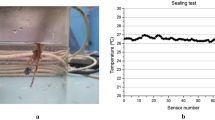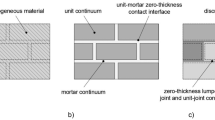
Overview
- Self-contained with ample coverage of fundamental underpinnings in the first part
- Stands as the only book detailing the advanced nonlinear analysis of concrete dams and nuclear containment structures
- Features highly inter-disciplinary coverage tying together nonlinear transient finite element analysis, concrete aging, earthquake engineering, probabilistic analysis, and machine learning
- Guided by the most up-to-date understanding from the peer-reviewed, archival literature
Access this book
Tax calculation will be finalised at checkout
Other ways to access
About this book
This self-contained book focuses on the safety assessment of existing structures subjected to multi-hazard scenarios through advanced numerical methods. Whereas the focus is on concrete dams and nuclear containment structures, the presented methodologies can also be applied to other large-scale ones.
The authors explains how aging and shaking ultimately lead to cracking, and how these complexities are compounded by their random nature. Nonlinear (static and transient) finite element analysis is hence integrated with both earthquake engineering and probabilistic methods to ultimately derive capacity or fragility curves through a rigorous safety assessment.
Expanding its focus beyond design aspects or the state of the practice (i.e., codes), this book is composed of seven sections:
- Fundamentals: theoretical coverage of solid mechnics, plasticity, fracture mechanics, creep, seismology, dynamic analysis, probability and statistics
- Damage: that can affect concrete structures, such as cracking of concrete, AAR, chloride ingress, and rebar corrosion,
- Finite Element: formulation for both linear and nonlinear analysis including stress, heat and fracture mechanics,
- Engineering Models: for soil/fluid-structure interaction, uncertainty quantification, probablilistic and random finite element analysis, machine learning, performance based earthquake engineering, ground motion intensity measures, seismic hazard analysis, capacity/fragility functions and damage indeces,
- Applications to dams through potential failure mode analyses, risk-informed decision making, deterministic and probabilistic examples,
- Applications to nuclear structures through modeling issues, aging management programs, critical review of some analyses,
- Other applications and case studies: massive RC structures and bridges, detailed assessment of a nuclear containment structure evaluation for license renewal.
This book should inspire students, professionals and most importantly regulators to rigorously apply the most up to date scientific methods in the safety assessment of large concrete structures.
Similar content being viewed by others
Table of contents (36 chapters)
-
Front Matter
-
Finite Element
-
Front Matter
-
-
Engineering Models
-
Front Matter
-
Authors and Affiliations
About the authors
Victor E. Saoumais a Professor in the Department of Civil Engineering at the University of Colorado, Boulder. He has 40 years of academic experience, has been working on fracture mechanics, alkali silica reaction, and their impact on the seismic safety assessment of dams and nuclear reactors.
Dr. M.Amin Hariri-Ardebili is a research associate at the University of Colorado, Boulder and has 15years of experience in advanced numerical analysis of infrastructures. He is an expert in probabilistic risk-based safety evaluation, uncertainty quantification and applied machine learning in structural and earthquake engineering.
Accessibility Information
Accessibility information for this book is coming soon. We're working to make it available as quickly as possible. Thank you for your patience.
Bibliographic Information
Book Title: Aging, Shaking, and Cracking of Infrastructures
Book Subtitle: From Mechanics to Concrete Dams and Nuclear Structures
Authors: Victor E. Saouma, M. Amin Hariri-Ardebili
DOI: https://doi.org/10.1007/978-3-030-57434-5
Publisher: Springer Cham
eBook Packages: Engineering, Engineering (R0)
Copyright Information: Springer Nature Switzerland AG 2021
Hardcover ISBN: 978-3-030-57433-8Published: 14 April 2021
Softcover ISBN: 978-3-030-57436-9Published: 15 April 2022
eBook ISBN: 978-3-030-57434-5Published: 13 April 2021
Edition Number: 1
Number of Pages: LXXII, 1115
Number of Illustrations: 87 b/w illustrations, 562 illustrations in colour
Topics: Geoengineering, Foundations, Hydraulics, Numerical Analysis, Building Repair and Maintenance, Offshore Engineering, Applications of Nonlinear Dynamics and Chaos Theory



